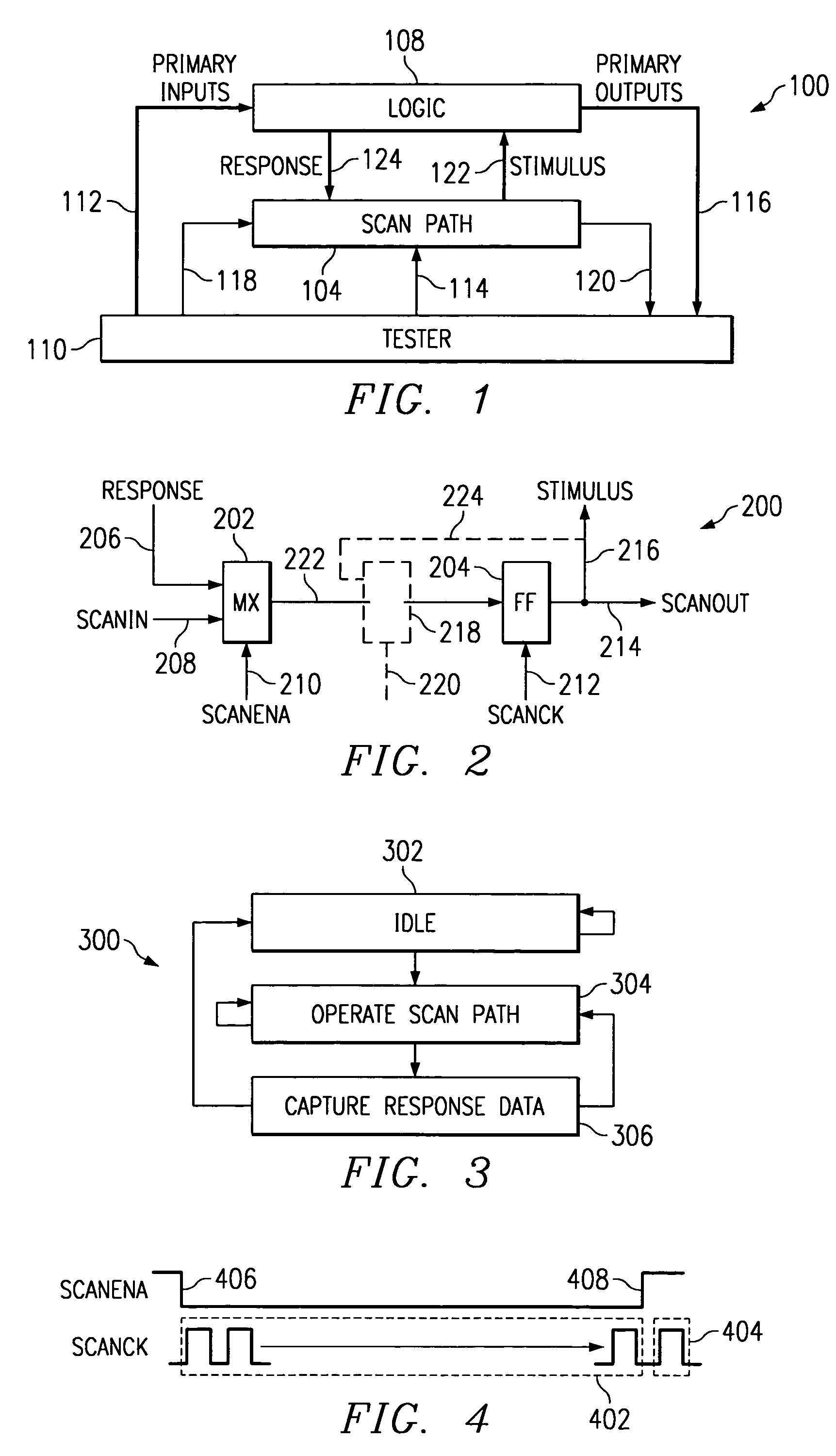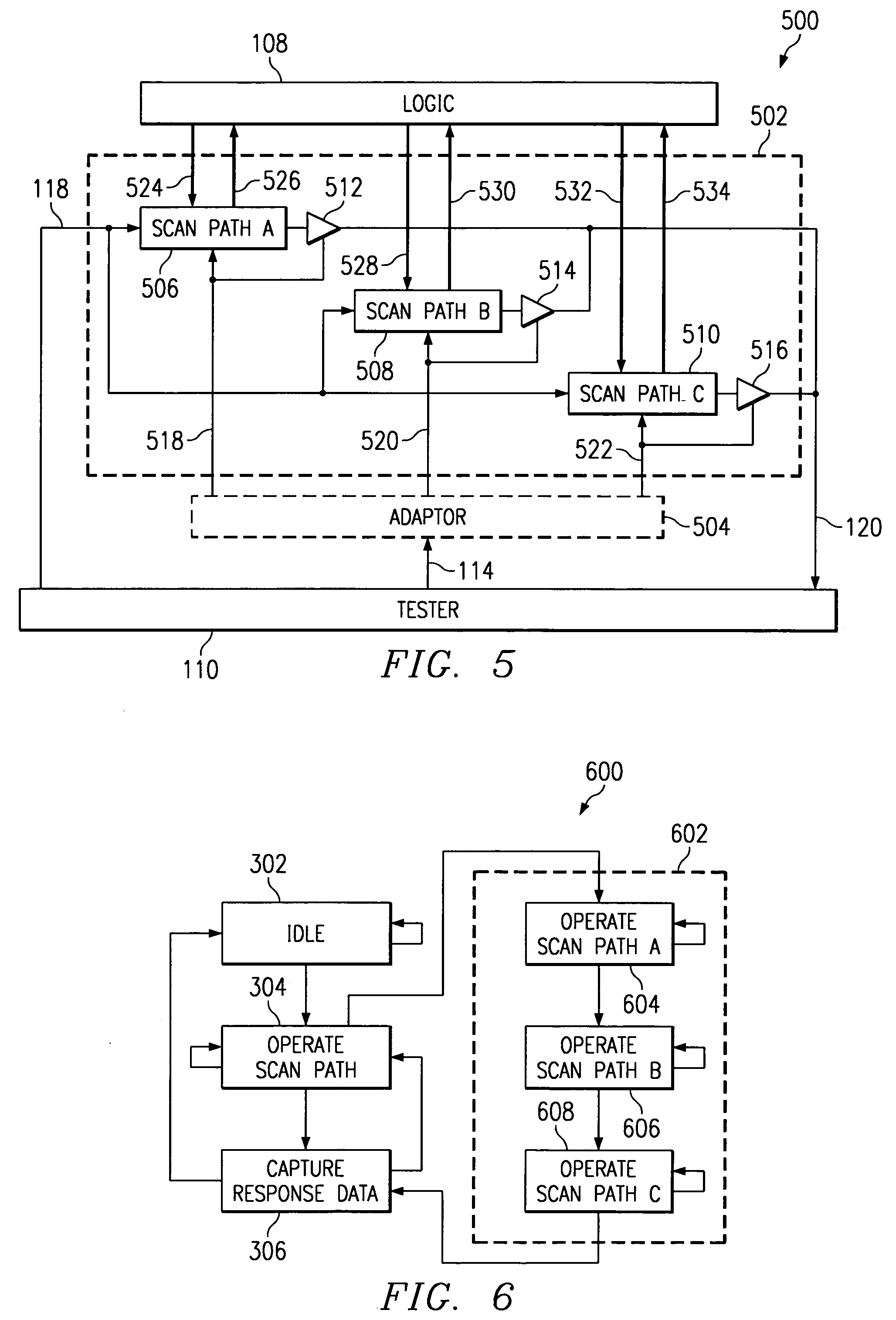Means scanning scan path parts sequentially and capturing response simultaneously
a scanning path and sequential technology, applied in the direction of resistance/reactance/impedence, testing circuits, instruments, etc., can solve the problems of increasing the cost of manufacturing ic, lengthening the test time, and adding undesirable delays, so as to reduce the test power consumption, reduce the test time, and reduce the test time
- Summary
- Abstract
- Description
- Claims
- Application Information
AI Technical Summary
Benefits of technology
Problems solved by technology
Method used
Image
Examples
Embodiment Construction
[0039]FIG. 5 illustrates the scan architecture of FIG. 1 after it has been adapted into the low power scan architecture of the present invention. The changes between the FIG. 1 scan architecture and the FIG. 5 low power scan architecture involve modification of scan path 104 into scan path 502, and the insertion of an adaptor circuit 504 in the control path 114 between tester 110 and scan path 502.
[0040]Adapting scan path 104 into scan path 502 involves reorganizing scan path 104 from being a single scan path containing all the scan cells (M), into a scan path having a desired number of selectable separate scan paths. In FIG. 5, scan path 502 is shown after having been reorganized into three separate scan paths A 506, B 508, and C 510. It is assumed at this point in the description that the number of scan cells (M) in scan path 104 is divisible by three such that each of the three separate scan paths A, B, and C contains an equal number of scan cells (M / 3). The case where scan path ...
PUM
 Login to View More
Login to View More Abstract
Description
Claims
Application Information
 Login to View More
Login to View More - R&D
- Intellectual Property
- Life Sciences
- Materials
- Tech Scout
- Unparalleled Data Quality
- Higher Quality Content
- 60% Fewer Hallucinations
Browse by: Latest US Patents, China's latest patents, Technical Efficacy Thesaurus, Application Domain, Technology Topic, Popular Technical Reports.
© 2025 PatSnap. All rights reserved.Legal|Privacy policy|Modern Slavery Act Transparency Statement|Sitemap|About US| Contact US: help@patsnap.com



